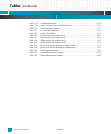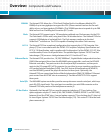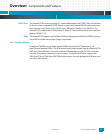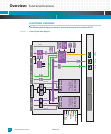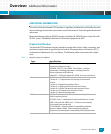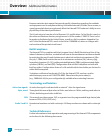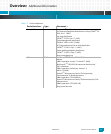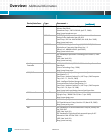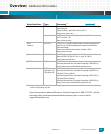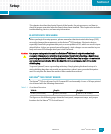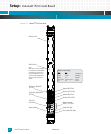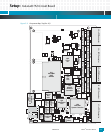
Overview: Additional Information
Katana®752i User’s Manual 10006024-04
1-6
Emerson maintains test reports that provide specific information regarding the methods
and equipment used in compliance testing. Unshielded external I/O cables, loose screws, or
a poorly grounded chassis may adversely affect the Katana®752i hardware’s ability to com-
ply with any of the stated specifications.
The UL web site at ul.com has a list of Emerson’s UL certifications. To find the list, search in
the online certifications directory using Emerson’s UL file number, E190079. There is a list
for products distributed in the United States, as well as a list for products shipped to Can-
ada. To find the Katana®752i, search in the list for 10006008-xx, where xx changes with
each revision of the printed circuit board.
RoHS Compliance
The Katana®752i is compliant with the European Union’s RoHS (Restriction of Use of Haz-
ardous Substances) directive, created to limit harm to the environment and human health
by restricting the use of harmful substances in electrical and electronic equipment. Effec-
tive July 1, 2006, RoHS restricts the use of six substances: cadmium (Cd), mercury (Hg),
hexavalent chromium (Cr (VI)), polybrominated biphenyls (PBBs), polybrominated diphe-
nyl ethers (PBDEs), and lead (Pb). Configurations that are RoHS compliant are built with
lead-free solder. Configurations that are 5-of-6 are built with tin-lead solder per the lead-in-
solder RoHS exemption.
To obtain a certificate of conformity (CoC) for the Katana®752i, send an e-mail to
sales@artesyncp.com or call 1-800-356-9602. Please have the part number(s)
(e.g., C000####-##) for your configuration(s) available when contacting Emerson.
Terminology and Notation
Active low signals: An active low signal is indicated with an asterisk * after the signal name.
Byte, word: Throughout this manual byte refers to 8 bits, word refers to 16 bits, and long word refers to
32 bits, double long word refers to 64 bits.
PLD: This manual uses the acronym, PLD, as a generic term for programmable logic device (also
known as FPGA, CPLD, EPLD, etc.).
Radix 2 and 16: Hexadecimal numbers end with a subscript 16. Binary numbers are shown with a subscript
2.
Technical References
Further information on basic operation and programming of the Katana®752i components
can be found in the following documents.



